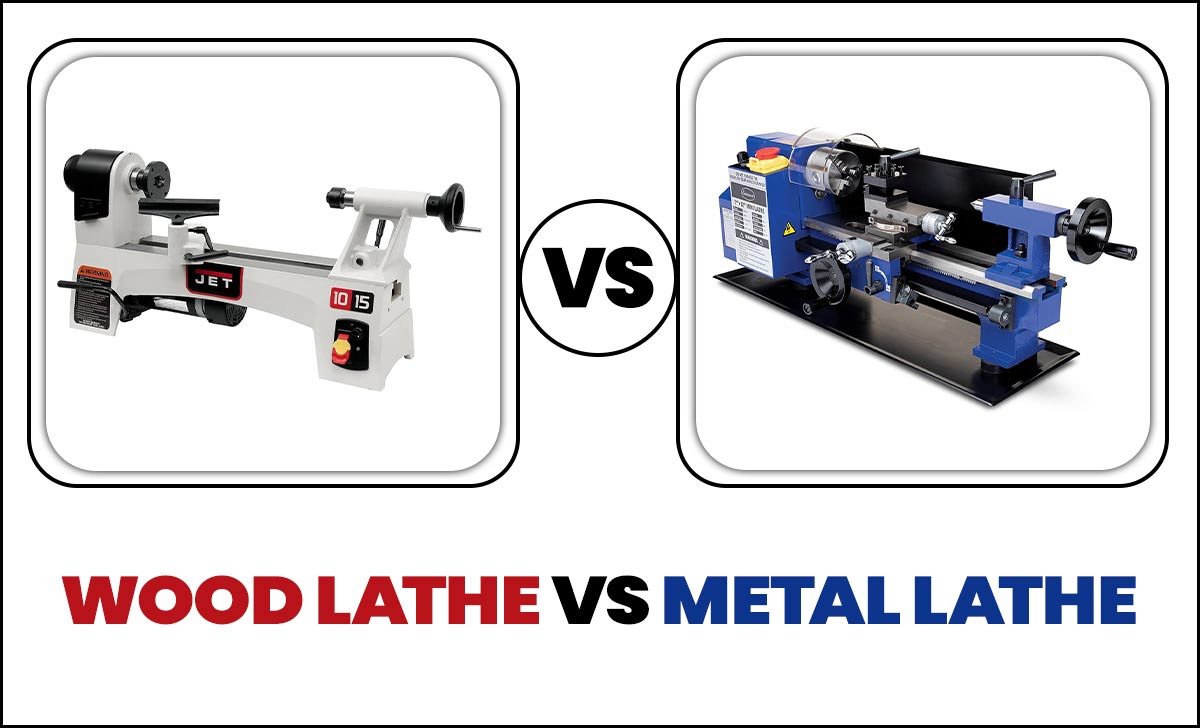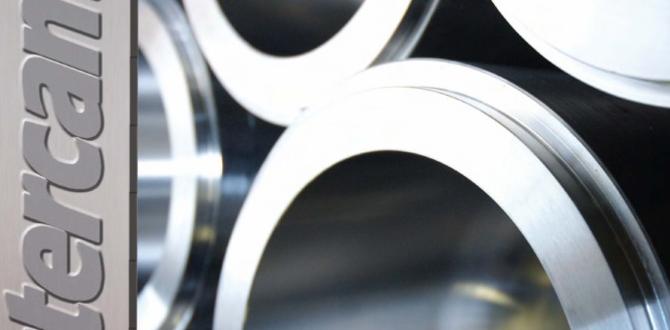Quick Summary: For a 1/8″ stub carbide end mill, look for models designed for low-helix or high-helix angles, typically 2-flute or 3-flute, with a polished or TiCN coating. These features enhance chip evacuation and surface finish when using Minimum Quantity Lubrication (MQL) systems, especially for materials like MDF and softer plastics.
Hey everyone, Daniel Bates here from Lathe Hub! Have you ever stared at a tiny 1/8″ end mill and wondered if it’s the right one for your project, especially when you want to keep things clean with a mist coolant system? It can feel like trying to pick a needle in a haystack sometimes, right? Especially when you’re working with materials like MDF or plastics, and you want that perfect finish without a giant mess. Don’t worry, we’ve all been there! In this guide, we’ll break down exactly what makes a 1/8″ stub carbide end mill “MQL friendly” and how to choose the best one for your needs. Get ready to make your small-scale milling tasks much smoother and cleaner!
Choosing Your 1/8″ Stub Carbide End Mill: A Beginner’s Guide
As a machinist, I’ve spent countless hours with these little cutting tools. The 1/8″ end mill is a workhorse for detail work on CNC machines and even some manual milling operations. When you add the challenge of using Minimum Quantity Lubrication (MQL), things can get interesting. MQL is fantastic for keeping things cool, reducing wear, and improving surface finish, but it requires the right tool to work effectively. Let’s dive into what you need to know.
What Exactly is a “Stub Length” End Mill?
Before we talk about MQL, let’s get clear on what “stub length” means. Standard end mills have a flute length that’s about 2 to 3 times their diameter. A stub length end mill, on the other hand, has a shorter flute length, typically only 1 to 1.5 times the diameter.
Why choose a stub over a standard?
- Increased Rigidity: The shorter flute length means less tool deflection, especially important for smaller diameter tools like a 1/8″. This translates to more accurate cuts and less chatter.
- Better for Shallow Cuts: If your project doesn’t require deep slotting or plunging, a stub length is often more than sufficient and offers better stability.
- Reduced Vibration: The shorter, beefier design can help minimize vibrations, leading to a smoother finish.
For 1/8″ end mills, the stub length is particularly beneficial because such small tools can be prone to chatter and breakage if they flex too much. Staying rigid is key!
Carbide vs. High-Speed Steel (HSS) for Small End Mills
When you’re working with finer details and potentially harder materials, carbide is usually the go-to choice over High-Speed Steel (HSS). Here’s a quick comparison:
| Feature | Carbide | HSS |
|---|---|---|
| Hardness | Very High | High |
| Rigidity | Excellent | Good |
| Heat Resistance | Excellent | Good |
| Tool Life | Longer, especially in abrasive materials | Shorter than carbide |
| Brittleness | More brittle, can chip | Less brittle, can bend |
| Cost | Higher upfront | Lower upfront |
For small diameter tools like a 1/8″ end mill, carbide offers superior rigidity and heat resistance, which are crucial for maintaining accuracy and tool life, especially when dealing with the forces involved in milling. While HSS might be more forgiving of minor abuses, for precision work and better performance, carbide is usually the smarter investment.
What Does “MQL Friendly” Actually Mean for an End Mill?
MQL, or Minimum Quantity Lubrication, is a way of applying a very small amount of cutting fluid, usually in the form of a mist, directly to the cutting zone. It’s awesome for keeping things cool, lubricated, and clearing chips without creating a big coolant flood. But for an end mill to be “MQL friendly,” it needs specific design features to make the most of this system.
Here’s what to look for:
- Excellent Chip Evacuation: This is paramount. The flutes of the end mill need to be designed to efficiently carry chips away from the cutting edge. For MQL, this is even more critical because the fluid mist helps push chips out, but if the flutes aren’t designed for it, you’ll get chip recutting and a poor finish.
- Polished Flutes: End mills with highly polished flutes have a smoother surface. This polished finish reduces friction and helps prevent chips from sticking to the flutes, allowing them to be cleared more easily by the MQL mist.
- Appropriate Helix Angle: The helix angle (the spiral of the cutting edges) plays a big role.
- Low Helix (0-30 degrees): These are generally good for materials that produce short, brittle chips, like cast iron or harder plastics. They offer more support to the cutting edge.
- High Helix (30-45 degrees or more): These are excellent for materials that produce long, stringy chips, like aluminum or softer plastics. The steeper angle helps to “pull” the chip up and out of the cut more effectively, which is great for MQL as it aids chip evacuation. For MDF and many plastics, a higher helix angle often performs better with MQL.
- Number of Flutes: For MQL and smaller end mills, you’ll most commonly see 2-flute or 3-flute designs.
- 2-Flute: Offers excellent chip clearance and is generally considered more robust for plunging and side milling in softer materials. This is often a top choice for MQL in materials like MDF and plastics.
- 3-Flute: Can sometimes offer a slightly better surface finish than a 2-flute in certain materials and can handle a bit more material removal, but chip clearance might be slightly more compromised.
- Coatings: While not always essential, certain coatings can enhance performance. A PVD coating like TiCN (Titanium Carbonitride) can offer increased hardness, lubricity, and wear resistance, which is beneficial when running with MQL.
The Best 1/8″ Stub Carbide End Mills for MDF and Plastics with MQL
When you’re milling MDF, wood composites, or various types of plastics (like acrylic, ABS, or polypropylene) using MQL, you’re looking for a tool that prioritizes chip evacuation and a smooth finish. These materials can produce fine dust (MDF) or “gummy” chips (some plastics) that can easily clog flutes.
Here’s what types of 1/8″ stub carbide end mills tend to excel:
- 2-Flute, High Helix (e.g., 35-45 degrees): These are often the champions for plastics and MDF with MQL. The higher helix angle helps lift and throw the chips and dust out of the flute efficiently, preventing recutting and buildup. The polished flutes of a good quality tool will further aid this.
- Single Flute (Less Common but Effective): While less common in stub lengths, single-flute end mills offer the absolute best chip clearance. If you can find a 1/8″ stub “O” flute (a type of single flute) designed for plastics or composites, it can be a fantastic choice for MQL, though they might not be as rigid as a 2-flute.
- Specialty “Plastic” or “Wood” End Mills: Some manufacturers produce end mills specifically for these materials. They often feature designs optimized for chip evacuation, like aggressive helix angles and highly polished flutes. Look for terms like “O-flute,” “high performance plastic,” or “wood carving” end mills in carbide.
Consider the Shank: Make sure the shank is the standard 1/8″ for your collet. Some specialized bits might have a different shank size, but for common setups, 1/8″ is what you’ll need.
Key Features to Look for in an MQL-Friendly End Mill:
Let’s sum up the must-have features when you’re shopping:
- Material: Solid Carbide (essential for rigidity and heat resistance)
- Type: Stub Length (for maximum rigidity)
- Flute Count: 1 or 2 flutes are usually best for MQL in softer materials to maximize chip clearance.
- Helix Angle: High helix (30-45 degrees or more) is generally preferred for plastics and MDF when using MQL.
- Flute Finish: Highly polished or mirror-finish flutes are crucial for preventing chip adhesion and aiding evacuation.
- Coating: Optional but beneficial – TiCN or uncoated polished carbide are good choices. Avoid rough coatings that can interfere with chip flow.
- Edge Prep: A slightly sharp or micro-chamfered cutting edge is usually good. Avoid highly honed edges that can be too delicate.
How to Use an MQL System with Your 1/8″ End Mill
Using MQL isn’t just about having the right tool; it’s also about setting up your system correctly. For a 1/8″ end mill, precision is key.
1. Adjusting Your MQL System:
- Flow Rate: Start with the lowest setting on your MQL unit. You only need a fine mist, not a stream. Too much fluid can actually hinder chip evacuation and create a mess.
- Nozzle Position: Aim the nozzle directly at the cutting edge where the tool engages the material. The mist should hit the point of contact. You might need to adjust the nozzle angle as the tool moves. Some systems have articulated arms for this.
- Air Pressure: Ensure your shop air is clean and dry. The air pressure helps atomize the fluid and direct the mist.
2. Setting Your CNC Machine Parameters:
-
- Spindle Speed (RPM): For a 1/8″ carbide end mill in MDF or plastics, a common starting point is between 10,000 and 24,000 RPM, depending on the material. Higher RPMs can help with chip formation and evacuation.
- Feed Rate: This is critical. You want to create small, manageable chips. A good starting point might be 15-40 inches per minute (IPM), but this varies wildly with material and depth of cut. A general rule is to aim for an Ideal Chip Load (ICL). For a 1/8″ 2-flute end mill, the ICL might be around 0.001″ – 0.003″ per flute. So, Feed Rate = RPM x Number of Flutes x Chip Load per Flute. For example, 18,000 RPM x 2 flutes x 0.002″ chip load = 72 IPM.
- Depth of Cut (DOC) and Stepover: For small end mills and delicate materials, it’s best to run “light” cuts.
- Depth of Cut (axial DOC): Start shallow, perhaps 0.010″ to 0.050″ for MDF and plastics.
- Stepover (radial DOC): For slotting, this is 100% of the diameter. For contouring, aim for 20-50% of the diameter in a single pass to avoid stressing the tool or the material. You can always take multiple shallow passes.
A great resource for understanding chip load and cutting parameters is the Sandvik Coromant online calculator, which can give you a good starting point for various materials and tools.
- Plunging: If you need to plunge (drill straight down), use a slow plunge feed rate (e.g., 10-20 IPM) and ensure the MQL is hitting the entry point. Specialized “chipless” or “data” bits are designed for efficient plunging, but a good high-helix 2-flute can often handle it.
Troubleshooting Common Issues with 1/8″ End Mills and MQL
Even with the best tools, you might run into snags. Here are some common problems and how to fix them:
Problem 1: Chip Buildup / Paking
What it looks like: Chips adhering to the flutes, material not clearing, poor surface finish, tool breakage.
Causes:
- Feed rate too high or too low.
- Depth of cut too high.
- Insufficient or poorly directed MQL.
- End mill flutes are not polished or are dirty.
- Wrong type of end mill for the material (e.g., using a square end mill with a low helix on a gummy plastic).
Solutions:
- Reduce feed rate slightly.
- Reduce depth of cut.
- Adjust MQL nozzle to direct mist more effectively.
- Ensure your MQL unit is functioning correctly.
- Try a different end mill with a higher helix or polished flutes.
- Clean the end mill thoroughly to remove any residue.
Problem 2: Poor Surface Finish (Fuzzy Edges, Ridges)
What it looks like: The cut edge is not clean and smooth; it may appear fuzzy, wavy, or have parallel ridges.
Causes:
- Tool vibration or chatter.
- Feed rate too high or too low.
- Worn or chipped cutting edge.
- Material not held securely.
- Tool deflection due to excessive depth of cut.
Solutions:
- Ensure your machine’s spindle bearings are good and there’s no runout.
- Gently clean the end mill flutes.
- Try a slightly slower feed rate to allow the tool to take a more consistent chip.
- Reduce depth of cut and stepover.
- Use a stub length end mill for increased rigidity.
- Ensure your material is clamped rigidly without any flex.
- Consider a higher quality end mill with a better surface finish.
Problem 3: Tool Breakage
What it looks like: The 1/8″ end mill breaks during operation.
Causes:
- Excessive chip recutting (leading to heat and stress).
- Deflection and binding.
- Plunge cuts with too high a feed rate or too aggressive a Z-motion.
- Clumsy handling or setup errors.
- Tool entering material too quickly or at a sharp angle without proper setup.
Solutions:
- Always start with conservative cutting parameters and gradually increase.
- Prioritize chip evacuation with MQL and appropriate end mill geometry.
- Reduce depth of cut and stepover.
- Ensure the tool is correctly seated in the collet.
- Use a “ramping” motion when entering the material if plunging.
- Inspect your collet and tool holder for wear or damage.
Where to Buy High-Quality 1/8″ Stub Carbide End Mills
When you’re looking for specialized tools like MQL-friendly carbide end mills, it’s best to go to reputable suppliers. You can find these tools from:
- Specialty CNC Tooling Suppliers: Companies that focus purely on cutting tools, often have the widest selection and expertise. (e.g., Harvey Tool, Melin Tool Company, Datron)
- General Machining Tool Suppliers: Larger retailers that carry a broad range of shop supplies may also have good options. (e.g., MSC Industrial Supply, McMaster-Carr, Grainger)
- Online Marketplaces: You can find many options on Amazon or eBay, but be sure to check reviews and seller reputation carefully for quality. Look for brands known for their tooling precision.
Always check the product description for specifications like flute count, helix angle, and surface finish. If “MQL” or “plastic” is mentioned, it’s a good sign!








